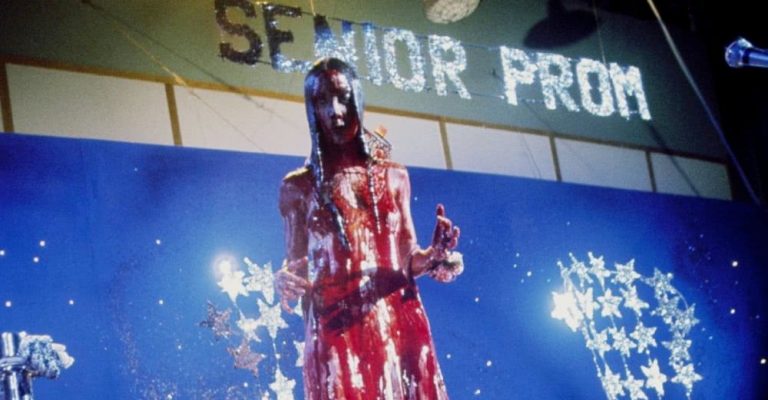You may feel either disgusted or excited by the recent news that a film inspired by infamous producer Harvey Weinstein is already in the works. What is undeniably thrilling – in simultaneously a good and a bad way – is that the screenwriter-director behind the project is none other than Brian De Palma.
Particularly in the 1980s, but sporadically throughout his whole career, this quintessentially American director has made several sexually-charged movies which, even if they rarely fit comfortably in the erotic thriller genre, have all depicted eroticism and sexuality in all their complexity. Inspired by his hero Alfred Hitchcock, but working in a more liberated moral climate, De Palma has never shied away from the uncomfortable aspects of sex.
Instead, he tends to search its darkest corners, sometimes to questionable effect, but more often with such artistry and courage as to make the viewer feel seen in their unease. If watching our darkest fears and desires represented on screen with genuine intelligence and cinematic flair doesn’t make us any less self-conscious, it can still make us feel less alone in the dark.
De Palma has never shied away from the uncomfortable aspects of sex.
De Palma’s biggest early success was not an erotic thriller, but it was nevertheless fully centred on sex – and specifically, a female sexuality rarely shown in mainstream cinema. Based on Stephen King’s first novel, Carrie (1976) is a horror movie about a teenage girl, played by Sissy Spacek, whose first periods are particularly traumatic. Sheltered from the world by her tyrannical religious mother (the great Piper Laurie), Carrie struggles to make herself accepted by the horny girls and boys at her school and unleashes a bloody and supernatural vengeance on them when they publicly shame her.
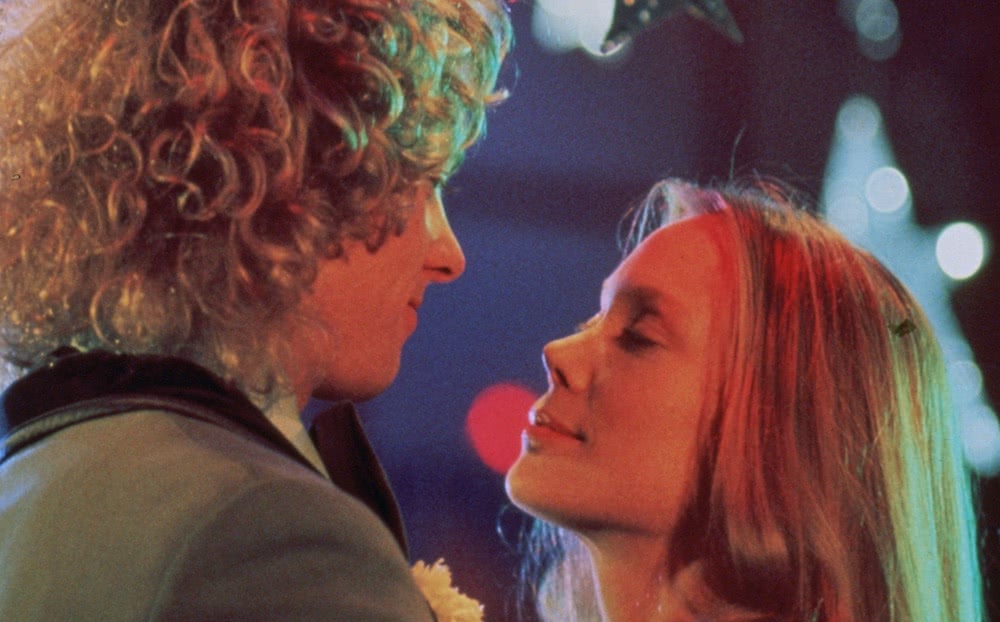
On prom night, a gang of hyper-sexual teens trick her into getting her angelic white dress and fair face splattered with pig blood, right when she gets crowned homecoming queen. The metaphor isn’t subtle: puberty is a terrible time and the beginning of a special kind of body horror for women.
Love Music?
Get your daily dose of metal, rock, indie, pop, and everything else in between.
De Palma doesn’t provide any sex scenes in the film, but depicts the two students responsible for Carrie’s humiliation as at once hateful and extremely sexy: Nancy Allen and John Travolta as Chris and Billy have a tense relationship that reeks of teenage sexual excitement, but also violence: when Billy murders the pig to set up Carrie’s humiliation, Chris shrieks with orgasmic excitement. Sex, it seems, is for bad people.
Yet De Palma isn’t simply against sex. Like Hitchcock before him, he finds great pleasure in the dance of attraction and romance. Although Carrie is fooled into going to the ball, her date Tommy (William Katt) first invites her out of charity (pushed by his kind girlfriend Sue, played by regular De Palma collaborator Amy Irving), and then grows to genuinely like her. Their slow-motion dancing progresses awkwardly and tenderly, because De Palma understands that intimacy is always at once intimidating and joyful.
When Tommy kisses Carrie, even though he doesn’t need to, De Palma’s camera spins around the couple as they forget the room, the people and their differences and get lost in that tender moment. However horrific, Carrie’s deadly rage when her maturity is ridiculed is understandable – and deeply sad. By focusing on Carrie even when she becomes a murderess, De Palma suggests that it was her schoolmates’ (and mother’s) accusatory attitude towards her sexual awakening, rather than that awakening itself, that sowed the seeds of destruction.
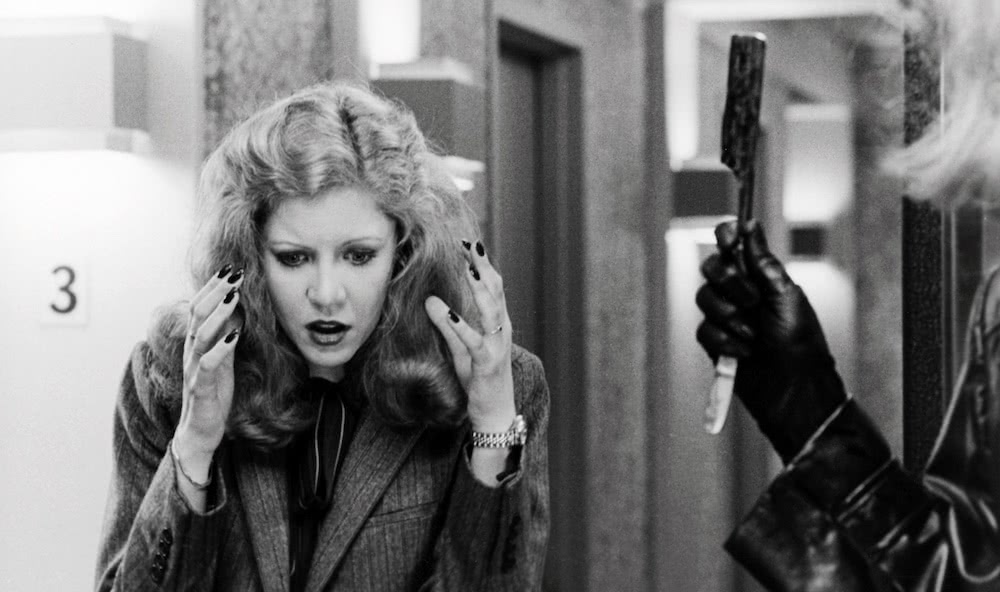
De Palma’s sexual politics are complex, and perhaps nowhere more confusing than in his 1980 film Dressed To Kill. Truly erotic and thrilling, the movie is much more explicitly about sex and its dangers than Carrie. Kate Miller (Angie Dickinson) is a sexually frustrated middle-aged woman who dreams of steamy embraces with her husband in the shower. After much doubt (expressed to her psychiatrist, played by Michael Caine), she has a tryst with a mysterious stranger who she meets at the Philadelphia museum of Art.
Here, De Palma revels in the pair’s game of cat and mouse, as he plays hard to get and hides in different rooms of the gallery. The camera sways across the space, catching glimpses of him and translating Kate’s point of view, but also her exhilarated feeling as she decides to let go of her middle-class correctness and pursue her head-spinning attraction.
When Kate wakes up in the man’s hotel room, her face is radiant – until she finds test results on his desk indicating that the man has an STD. This brutal and very early-‘80s twist no doubt leaves a bad taste: is De Palma punishing Kate for her promiscuity in the age of AIDS? Yet what immediately follows sheds a new light on her discovery, and on De Palma’s intentions.
De Palma’s sexual politics are complex, and perhaps nowhere more confusing than in his 1980 film Dressed To Kill.
Rushing to the elevator, Kate realises she has forgotten her wedding ring in the room and it is after having recovered it that she gets in the elevator with the mysterious woman who will kill her. Perhaps if she hadn’t worried about her ring, symbolising the heteronormative and oppressive family unit, Kate wouldn’t have died – and who knows what the sexually transmitted disease really was? De Palma doesn’t ignore the risks of sexual emancipation, but presents the classic social mores as more directly destructive.
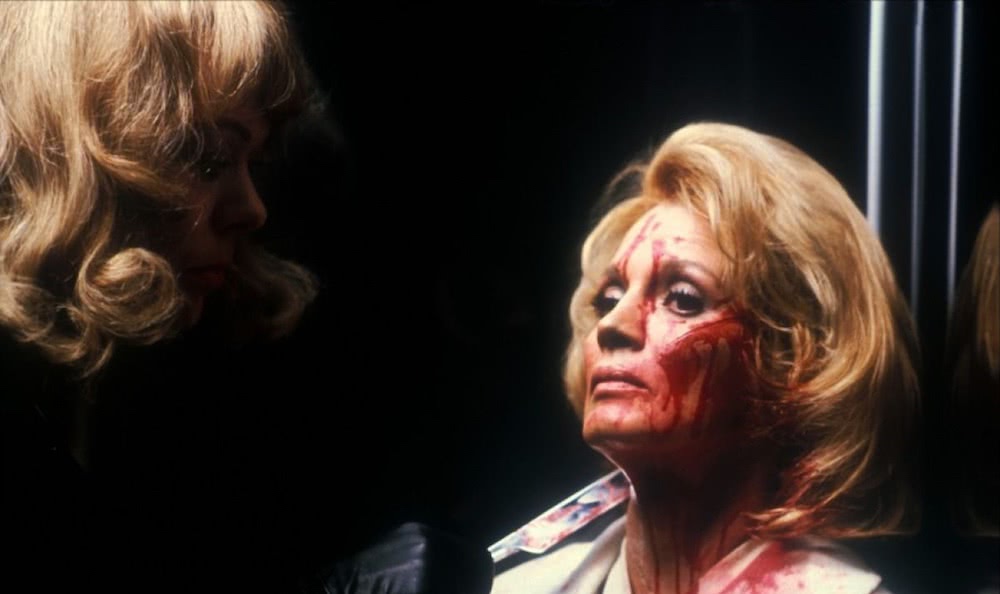
The message conveyed through the core enigma of Dressed To Kill (which I won’t spoil here) is similarly ambiguous, and such shocking uncertainty can rightly test the patience of spectators – especially today. Yet there is a way of reading the twisted psychology of the film’s killer as a cry for sexual liberation. Painted in broad genre strokes, Dressed To Kill ultimately mourns the difficulty of living one’s sexual truth.
Interestingly, De Palma allows the prostitute character Liz (Nancy Allen again, who was the director’s wife at the time) to become more independent throughout the film, using her sexuality as an empowering asset and developing a platonic relationship with the young Peter (the incredible Keith Gordon) as they investigate his mother Kate’s death. Unlike Carrie, Liz knows everything about sex, and this makes her better able to handle men.
Watch the trailer for De Palma’s Dressed To Kill below
The years following Dressed To Kill saw De Palma focus on the thriller genre more heavily and to mixed reviews; although Blow Out (1981) wasn’t a big hit, it has recently been canonized as a classic and ranks amongst his greatest work. John Travolta plays a sound recordist for exploitation films who accidentally catches on tape what he suspects to be the murder of a politician that many people want to cover up as an accident. 1983’s Scarface also has De Palma distance himself from the psychology of sex to focus instead on the evil of capitalism and greed (although Al Pacino’s line “say hello to my little friend” parodies porno come-ons).
De Palma doesn’t ignore the risks of sexual emancipation, but presents the classic social mores as more directly destructive.
Without both of these films, however, De Palma perhaps wouldn’t have been able to make Body Double in 1984, arguably the most erotic of his thrillers – and my favourite of his films. In his New York Times review, Vincent Canby rightly claimed that Blow Out “exclusively concern[s] the mechanics of movie making” as the protagonist reconstitutes the scene of the crime through audio and video recordings.
This awareness of the constructed nature of perception is key to Body Double’s voyeurism and twist (semi-revealed in its very title). With its exaggerated bloodbaths, Scarface prepared the terrain for the intensely gruesome and inflated violence that bursts through Body Double as well.
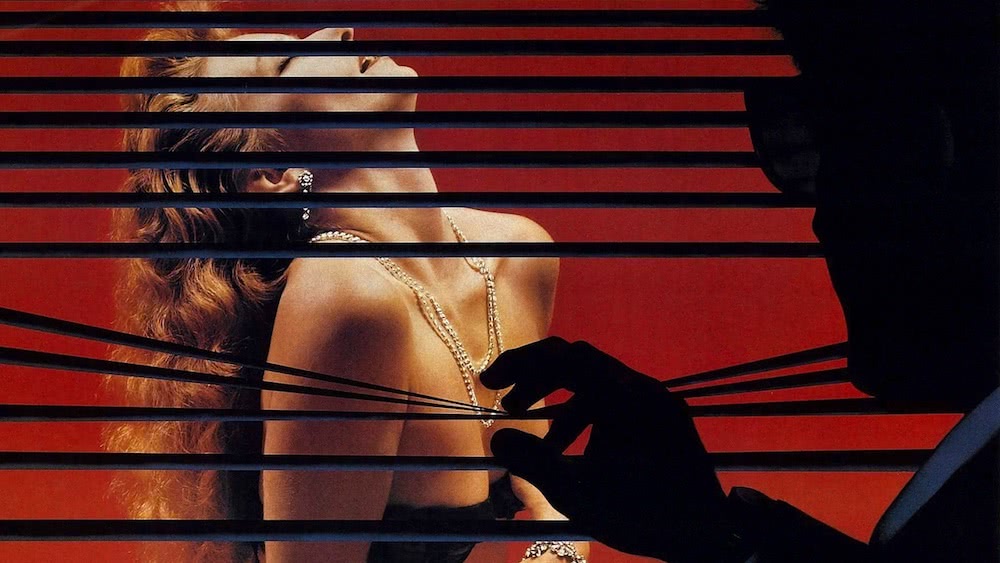
The protagonist of Body Double is Jake Scully (Craig Wasson), a struggling actor in Los Angeles – already, De Palma’s meta approach is evident. Like Hitchcock’s heroes, Jake is an everyman without much to show for himself who soon gets embroiled in a sordid story of voyeurism and murder. He meets Sam (Gregg Henry), a generous colleague who, touched by Jake’s recent loss of a cheating girlfriend and a place to stay, offers him to do some house sitting for a friend of his.
De Palma likes to watch, but he knows that we do too and he catches us watching.
The place is a modern (for the 1980s) apartment perched on the hills, with large glass windows and a telescope. Before leaving, Sam shows Jake how to use this device to look on the dance routine that a sexy female neighbour performs in her bedroom night after night. Contrary to Jimmy Stewart in Hitchcock’s Rear Window, Jake can leave the house and look for the culprit after he sees the woman getting attacked by a mysterious figure.
De Palma implicates the viewer throughout the film, from the sexy peeping to the investigation-as-stalking that leads Jake to actually meet Gloria (Deborah Shelton), the beautiful woman he is trying to protect. Through Jake’s eyes, we see and sense his irresistible attraction as well as his guilty anguish.
Similarly to the museum chase in Dressed To Kill, Jake discreetly pursues Gloria in a shopping mall, but here, De Palma doubles down on the perversion of voyeurism: not only does Jake (and the spectator) get to glimpse at the woman changing her underwear in a boutique, but he is also simultaneously being observed by the suspicious store clerk and a security guard.
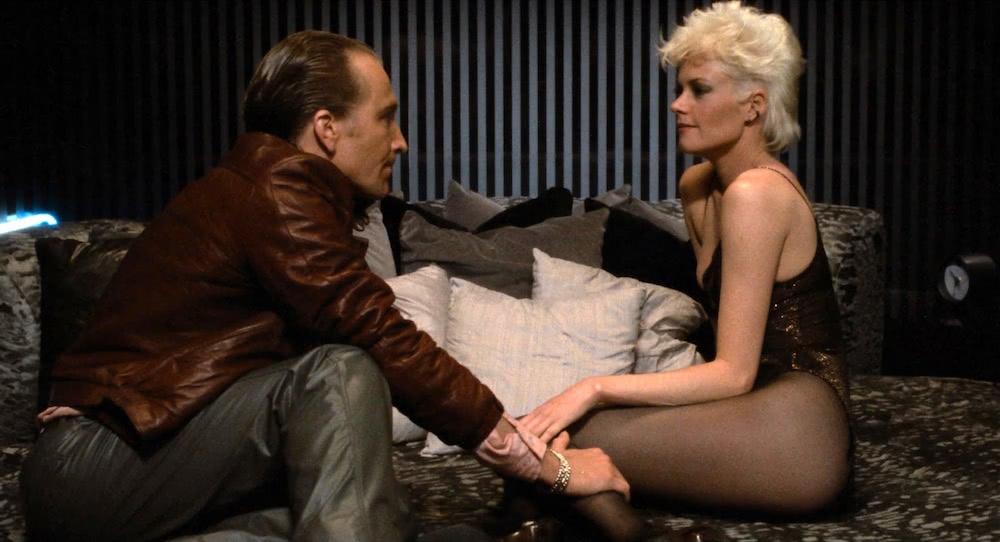
If that weren’t daunting enough, Jake then notices that the dark man menacing Gloria is also staring at her – and perhaps at himself (and thus at the audience). Inquisitive gazes cross each other, and the spectator, like Jake, is at once excited and ashamed. De Palma understands that attraction is the meeting of curiosity and sex, and that when curiosity goes too far, sex can become dangerous.
Unlike the master of suspense, who often kept a cerebral distance from his own hang-ups and fetishes, De Palma indulges explicitly in every aspect of Jake’s erotic compulsions and complexes. Echoing the camera’s dance in Carrie (and also nodding to Vertigo) De Palma once again circles around Jake and Gloria as they make out with an intensity that would be ridiculous if it weren’t so exciting and beautifully rendered.
In that moment, Gloria becomes a sublimation of the unattainable, unknown and beautiful woman: she makes Jake’s head spin and transcends her passive role as object of adoration. Suddenly, she runs away, leaving Jake helpless and even more distressed than before. Far from the femme fatale that the man has to tame, Gloria has more agency than her admirer.
For Jake’s problem is essentially a sexual one: as his acting coach shouts at him, he’s ‘gotta act,’ in the streets and in the sheets. The double entendre is a nice postmodern touch (Craig Wasson isn’t exactly a movie star, even if I do find his acting terrific), but also to be taken literally. Jake is too riddled by fear of inadequacy and too comfortable in his position as voyeur to truly have any control on the events around him. If he wants to find out what exactly is happening to Gloria and to himself, he will have to snap out of his paralysing funk. The gateway to his emancipation will be, of course, sex.
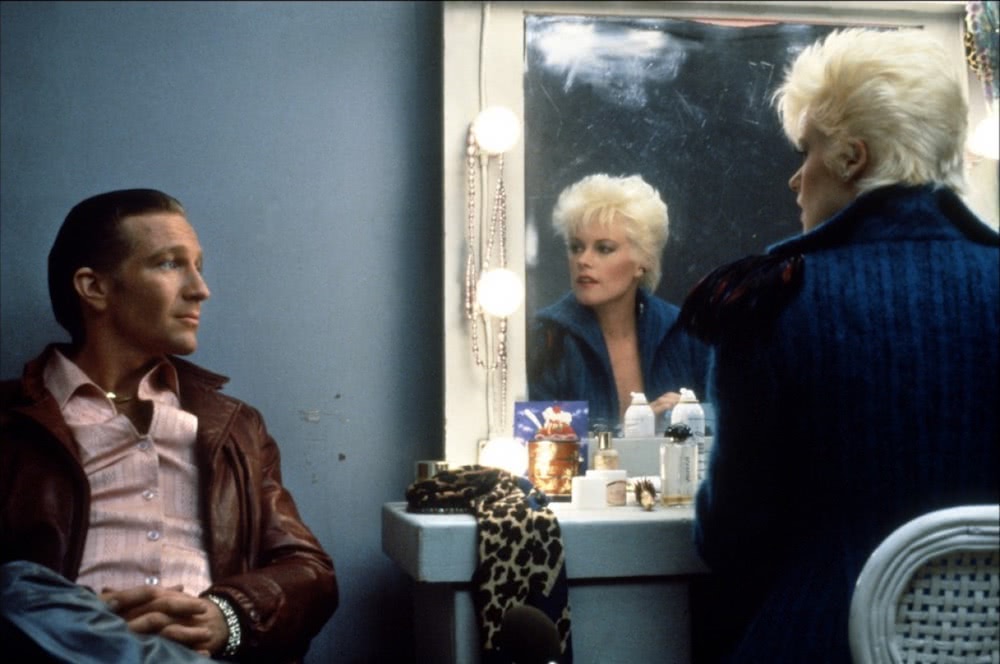
In the course of his investigation, Jake ends up having to enter the world of the porn film industry, and De Palma presents this plunge into the more threatening and morally corrupt recesses of sexuality with more enthusiasm and skill than he’s demonstrated previously. Jake suddenly finds himself following the lead singer of the band Frankie Goes To Hollywood as he serenades him to ‘Relax’, guiding our hero through a nightclub populated with leather-clad men and barely clad women.
The music-video-like sequence is esoteric and fun, and ends in Jake meeting Holly Body (Melanie Griffith, committed and hilarious) and having sex with her against a wall as the camera, again, whirls around them. This moment is particularly baffling in its explicitness, but the reveal that the scene was merely part of a porn film – with the previously voyeuristic camera “caught in the act” via a reflection in a mirror – that Jake and Holly were filming doubles down on the confusion.
De Palma likes to watch, but he knows that we do too and he catches us watching. Yet there’s no harm in that, as long as it is paired with action: although he will struggle and repeatedly fail, Jake will get a bit better at acting on his instincts, but only after he reconciles himself with his sexual desires.
It really was only a matter of time until De Palma made a film titled Femme Fatale. After Body Double, this 2002 production might be the closest thing to an erotic thriller that the director has yet made, but he once again plays freely with the already hard to define tropes of the genre. The woman of the title is, this time, the lead character: it is her story that we are following, rather than that of a hopeless man she attracts and fools.
Watch the trailer for De Palma’s Femme Fatale below
Laure (the impressive Rebecca Romijn) is a thief who one day, for no other reason than she wants to, decides to double-cross her two (male) accomplices, stealing diamonds off a female model she seduces on the Cannes Film Festival red carpet (as postmodern as De Palma gets), and escaping to Paris. The convoluted plot that follows is not worth summarising, but the central idea is that Laure uses her sexuality as well as her acting chops (she lies to everyone, audience included) to get what she wants.
Unlike Jake Scully in Body Double, she isn’t afraid to act on her desires – most of the time. The consequences of a single moment of weakness are damning and push Laure to rely on sex not for liberation, but for entrapment in the suffocating yet hopefully safer embrace of marriage. Always partial to a twist or two, De Palma doesn’t leave it at that and turns Laure into one of his strongest and most uplifting characters, which once again discredits the accusations of misogyny often made against him.
The latest De Palma erotic thriller, made ten years after Femme Fatale, might be his worst film, and not the most sex-positive. Passion (such a generic title isn’t a good omen) is the frustratingly complicated story of Christine (Rachel McAdams, whose commitment saves the film from total ridicule), a businesswoman manipulating her assistant Isabelle (a struggling Noomi Rapace) with encouragements and exploitation.
Sex is Christine’s tool, but also becomes Isabelle’s when her boss starts to destroy her reputation for sleeping with her boyfriend. When Christine is found murdered, Isabelle is arrested, but things soon get ever more complex, with De Palma exploiting the smartphone technology that his modern characters use (and abusing his own penchant for plot twists).

Christine’s sexual desires had been perverted by power and lead to her and Isabelle’s demise, and De Palma puts the blame on money rather than sex itself – yet one misses the psychological and cinematic flair of his earlier work, in particular Carrie, Body Double and even Dressed to Kill. It doesn’t really make sense to say that Passion sees De Palma parodying himself, since he’s always been self-reflexive, yet this film feels less confident and thought-through.
Perhaps tackling as shockingly morbid a story as that of Weinstein will give the director more leeway to be as provocative yet eye-opening about the complexities of sex as he used to be – or perhaps dealing with a fictionalised but nevertheless real story will be disastrous. In the meantime, we can all just ‘Relax’ and rewatch De Palma’s best erotic thrillers, continuing to examine how deliciously exposed and uncomfortable they make us feel.































